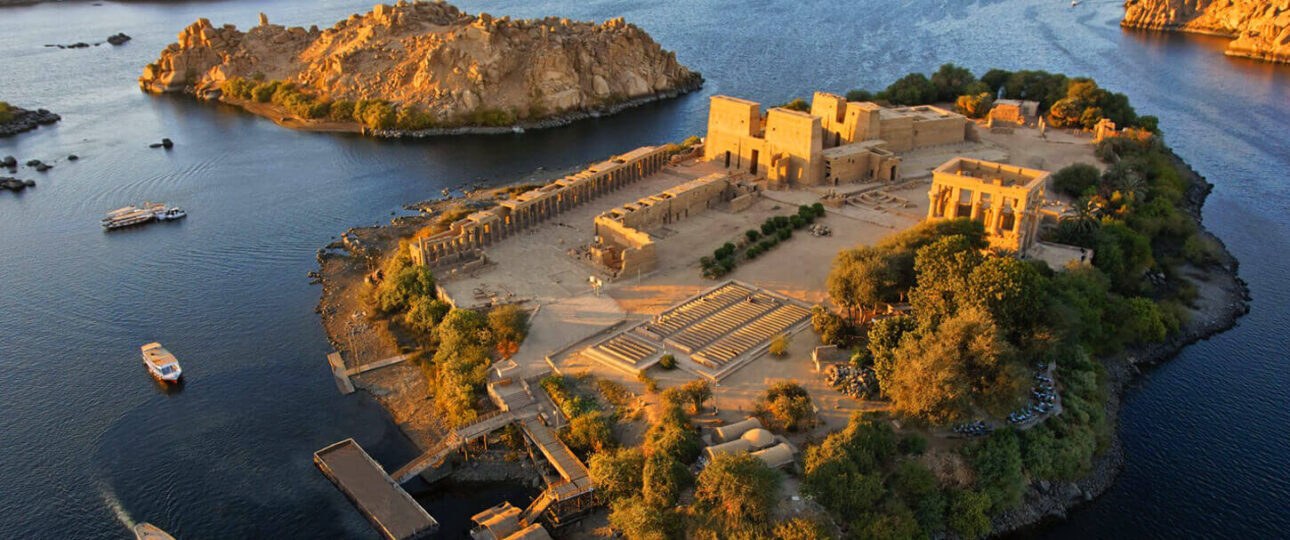Temple of Philae: Exploring the Mystical Beauty
The Temple of Philae, also known as the “Pearl of Egypt,” is a remarkable ancient structure nestled on the island of Philae in the Nile River. This temple complex is renowned for its captivating beauty, rich history, and intriguing legends. This article will delve into the mesmerizing world of the Temple of Philae, uncovering its secrets and exploring the mystical allure that has fascinated visitors for centuries.
The Temple of Philae
The Temple of Philae stands as a testament to the skill and craftsmanship of the ancient Egyptians. Dedicated to the goddess Isis, this temple complex was initially located on the island of Philae, which was considered sacred ground. However, due to the construction of the Aswan High Dam, the temple had to be relocated to nearby Agilkia Island to preserve it from the rising waters of the Nile. This intricate relocation project took several years and was a collaborative effort between the Egyptian government and UNESCO.
- Check the Climate of Egypt
History and Significance
The history of the Temple of Philae dates back to the Ptolemaic period of ancient Egypt, around the 4th century BCE. The temple complex served as a center for the worship of the goddess Isis and was regarded as one of the most important religious sites in the region. The ancient Egyptians believed the temple was the burial place of Osiris, the husband of Isis and the god of the afterlife.
Architectural Marvels
The Temple of Philae showcases an exquisite blend of architectural styles, reflecting the influences of various ancient civilizations, including the Egyptians, Greeks, and Romans. The main temple, the Temple of Isis, features intricate reliefs, towering columns, and beautifully carved hieroglyphics. The Hypostyle Hall, with its massive columns and elaborate decorations, leaves visitors in awe of the grandeur and sophistication of ancient Egyptian architecture.
Legends and Myths
The Temple of Philae has inspired numerous myths and legends throughout history. According to one legend, the temple was the birthplace of Horus, the falcon-headed god associated with the pharaohs. It is believed that Isis gave birth to Horus in the temple’s sanctuary, making it a place of immense spiritual significance. Exploring these mythical tales adds an air of mystique and wonder to the temple complex.
Exploring the Temple Complex
Visiting the Temple of Philae offers a unique opportunity to immerse oneself in the ancient Egyptian culture and marvel at the architectural marvels of the past. Let’s look at the key attractions within the temple complex.
The Temple of Isis
The Temple of Isis is the main structure within the [Temple of Philae]. It is dedicated to the goddess Isis, who was revered as the mother goddess and the protector of pharaohs. The temple features beautifully decorated walls, stunning statues, and a sacred inner sanctuary where the cult statue of Isis was once housed.
The Kiosk of Trajan
Located northeast of the Temple of Isis, the Kiosk of Trajan is an elegant pavilion-like structure. Built during the Roman period, it served as a gateway to the temple complex and stands as a testament to the architectural skills of the time.
The Temple of Hathor
Situated northwest of the Temple of Isis, the Temple of Hathor is dedicated to the goddess Hathor, who was associated with love, beauty, and music. This smaller temple features intricate reliefs depicting various scenes from ancient Egyptian mythology.
The Temple of Horus
While not directly part of the [Temple of Philae] complex, the nearby Temple of Horus in Edfu is worth mentioning, dedicated to the falcon-headed god Horus, this temple is one of the best-preserved ancient Egyptian temples and offers further insights into the religious practices of the time.
about the Temple of Philae
What is the best time to visit the Temple of Philae?
The best time to visit the Temple of Philae is during the winter months, from November to February, when the weather is mild and comfortable for exploring the temple complex.
How can I reach the Temple of Philae?
The [Temple of Philae] can be reached by boat ride from Aswan. Many tour operators in Aswan offer guided tours to the temple complex, providing transportation and informative commentary along the way.
Are there any entrance fees for visiting the Temple of Philae?
There is an entrance fee to visit the [Temple of Philae]. The price includes access to the entire temple complex, including the Temple of Isis, the Kiosk of Trajan, and the Temple of Hathor.
Can I take photographs inside the Temple of Philae?
Photography is allowed inside the [Temple of Philae]. However, checking with the temple authorities regarding any specific restrictions or guidelines is advisable.
Is any accommodation available near the Temple of Philae?
While there is no accommodation directly on Philae Island, several hotels and resorts in Aswan offer convenient access to the temple complex. Aswan provides a range of options to suit various budgets and preferences.
Are there other attractions near the Temple of Philae?
Apart from the [Temple of Philae], Aswan offers several other fascinating attractions, including the High Dam, the Unfinished Obelisk, and the Nubian Museum. Exploring these sites adds depth to the overall experience of visiting the region.
- Don’t miss out on our Best Time to Travel to Egypt
Conclusion
The Temple of Philae is a treasure trove of ancient Egyptian history and architecture. Its stunning beauty and the mystical legends surrounding it make it a must-visit destination for anyone interested in ancient civilizations. Stepping foot on the sacred ground of the temple complex is like embarking on a journey through time, where the grandeur of the past comes to life. Plan your visit to the [Temple of Philae] and get ready to be captivated by its enchanting allure.

